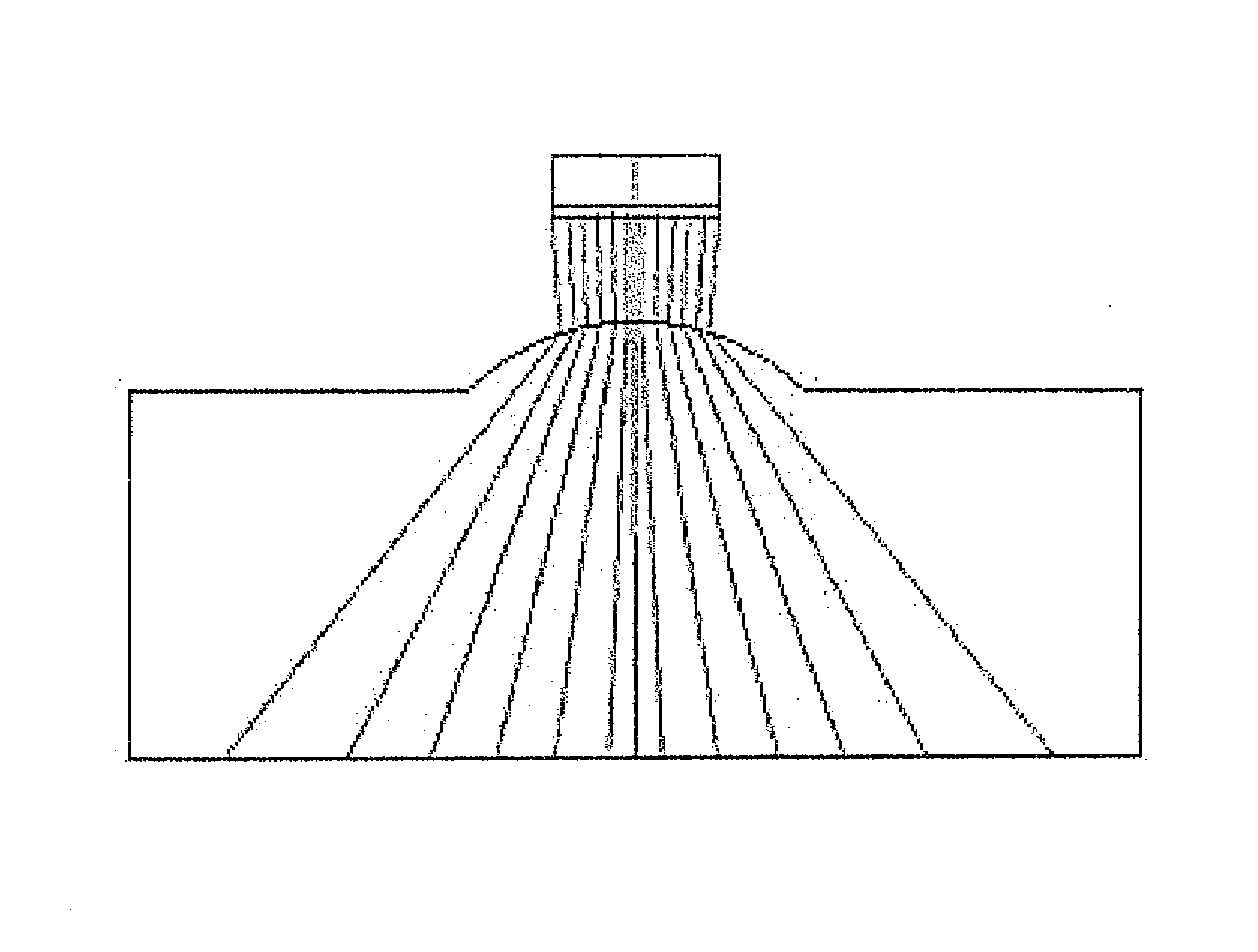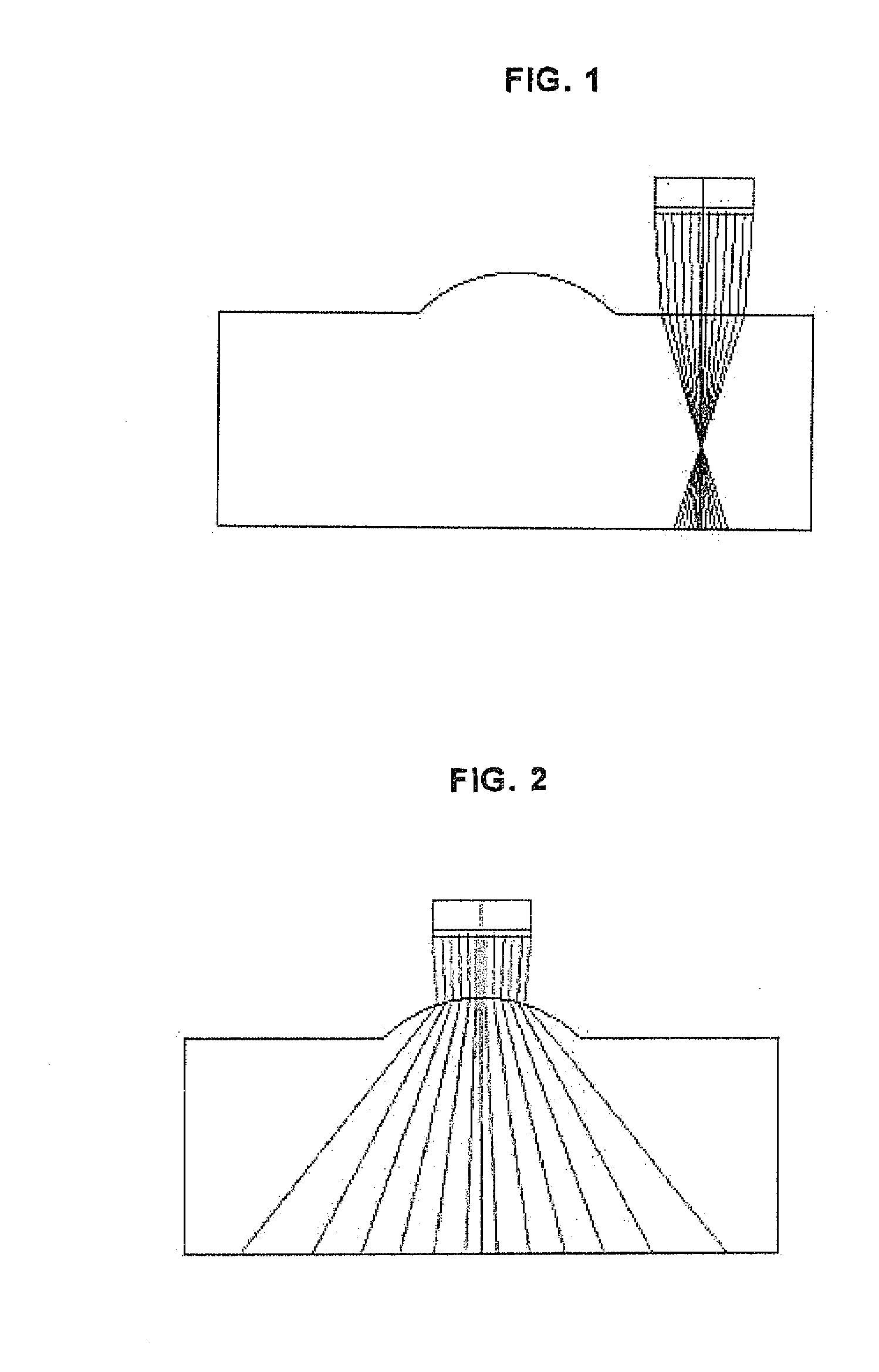Ultrasonic inspection method
a technology of ultrasonic and inspection method, which is applied in the direction of analysing solids using sonic/ultrasonic/infrasonic waves, measuring devices, instruments, etc., can solve the problems of complex curved components and welds, significant portion of these welds are neither flat nor smooth, and no ultrasonic inspection method is availabl
- Summary
- Abstract
- Description
- Claims
- Application Information
AI Technical Summary
Benefits of technology
Problems solved by technology
Method used
Image
Examples
Embodiment Construction
[0016]While the inventive inspection method may be accomplished in at least three different ways, there are some common areas to each method.
[0017]The first common area is that it is preferable to use a multi-element array ultrasonic probe.
[0018]Another common area is that the probe is separated from the component to be inspected by a substantial fluid path. The fluid may be water or a gel, but is preferably water as this is easiest to work with. Current ultrasonic transducer inspections are typically carried out in a manner wherein the transducer is coupled to the component being inspected by a fluid or gel that is less than a few thousandths of an inch thick, which means that the transducer is essentially almost touching the component. Thus, for the purposes of the invention, a substantial fluid path is intended to be at least several ultrasonic wavelengths between the transducer and component such that there is a space between the transducer and component that allows a relatively...
PUM
 Login to View More
Login to View More Abstract
Description
Claims
Application Information
 Login to View More
Login to View More - R&D
- Intellectual Property
- Life Sciences
- Materials
- Tech Scout
- Unparalleled Data Quality
- Higher Quality Content
- 60% Fewer Hallucinations
Browse by: Latest US Patents, China's latest patents, Technical Efficacy Thesaurus, Application Domain, Technology Topic, Popular Technical Reports.
© 2025 PatSnap. All rights reserved.Legal|Privacy policy|Modern Slavery Act Transparency Statement|Sitemap|About US| Contact US: help@patsnap.com



